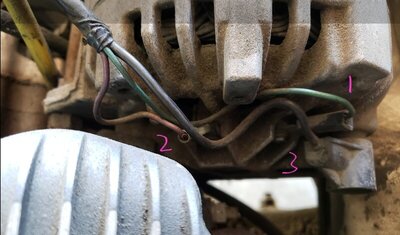jogirob
Well-Known Member
I'm running into some electrical gremlins that appeared all at once. My voltage readings drop to the "Discharge" range when I turn the parking lights on (light knob pulled out half way), and they drop big when headlights are turned on (light knob pulled out all the way). Turn signals are suuuper slow and I can see the ammeter (volt meter?) pulse with each tick of the turn signal. If I have the headlights on while using turn signals, eventually they'll slow to the point where they don't blink anymore. The ammeter pulsing readings even happen with headlights/parking lights off (light knob pushed in) and turn signals activated. Turn signals blink slightly faster than if headlights were on but still way slower than normal. Gauge cluster lighting is very dim. Power windows function is slower...I could go on. Because of all this I'm thinking it's got something to do with a bad ground?
I was doing a search on here to see how you guys would wire an after market ground wire kit but was surprised to find there's no mention of this on here with how sketchy grounds are on these older cars.
In addition to adding a closer ground connection from the 4 headlights down to the bumper I'm thinking of adding the following grounds: neg battery to alternator casing, neg battery to intake manifold, engine to chassis and will redo the neg battery to chassis connection. I'll clean and test the existing neg battery to engine connection. I'm considering of just slapping my own batch of re-used 8GA wire I salvaged from a messy amp install this car used to have. What do you all think? Hopefully I don't melt my frame down to the ground haha
I was doing a search on here to see how you guys would wire an after market ground wire kit but was surprised to find there's no mention of this on here with how sketchy grounds are on these older cars.
In addition to adding a closer ground connection from the 4 headlights down to the bumper I'm thinking of adding the following grounds: neg battery to alternator casing, neg battery to intake manifold, engine to chassis and will redo the neg battery to chassis connection. I'll clean and test the existing neg battery to engine connection. I'm considering of just slapping my own batch of re-used 8GA wire I salvaged from a messy amp install this car used to have. What do you all think? Hopefully I don't melt my frame down to the ground haha

















